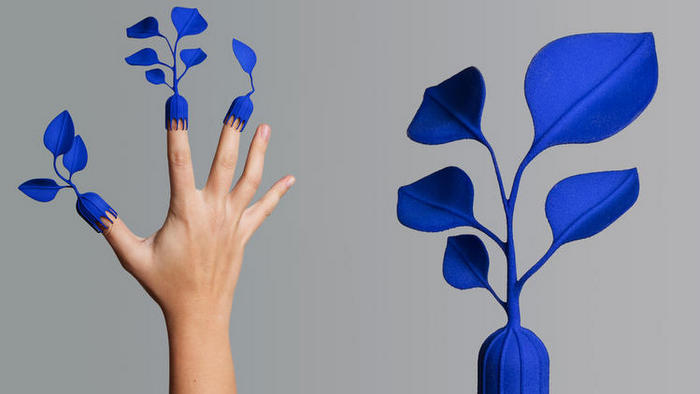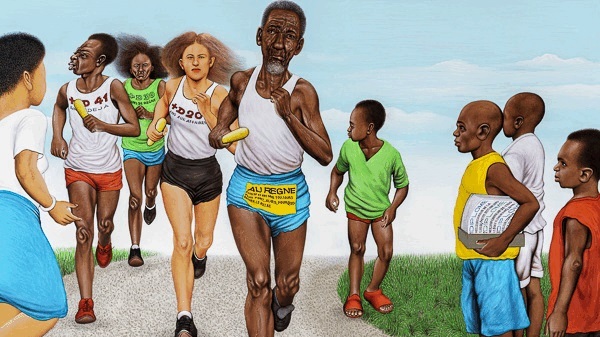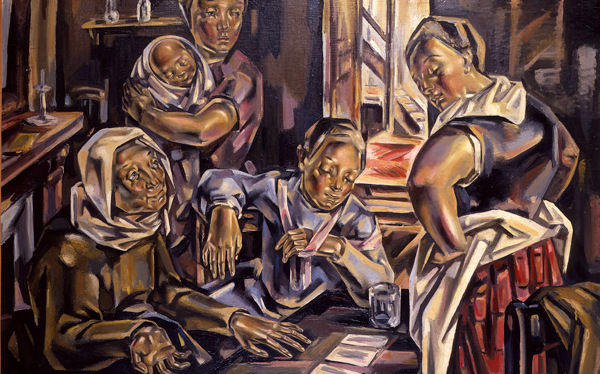Like the majority of us, Chéri Samba witnessed the horror of the earthquake in Morocco through social media. The Creuse Maghreb association has launched an online fundraiser on the Leetchi platform. All funds raised will be donated to the Red Cross. Without hesitation, Chéri Samba has stepped forward and is offering 3 artworks, with 35% of the sale price dedicated to the earthquake victims.
In order to encourage collectors to join him in this initiative, Chéri Samba is offering 3 artworks, titled "J'aime la couleur", "J'aime la couleur de la vraie carte du monde" and "J'aime le jeu de relais" at an exceptional price."
A self-taught artist, Chéri Samba initially earned a living as a signboard painter and a comic strip illustrator for the magazine "Bilenge Info" before establishing his own studio in 1975.
Much like many Kinshasa painters of his time, including Pierre Bodo, Moke, and Chéri Cherin, he drew inspiration from everyday life and addressed political, social, and economic issues in his artworks. He quickly gained popularity among the Kinshasa audience and could sustain himself through his art.
His paintings are always executed in a rich, vibrant, contrasting, and often glittering color palette, as if to downplay the seriousness of the subject matter. Regardless of his message, Chéri Samba aims to invite viewers into his paintings without apprehension: "When I start a painting, I define the subject, the idea, the message, even the title. The image is clear in my mind, even the colors... I precisely draw the subject in pencil down to the details, directly on the canvas, without any preliminary sketches."
In 1975, he created his first self-portrait, and by 1985, he decided to make himself a regular subject of his paintings so that both his name and his face would be recognizable. Noticing that viewers often glance briefly at paintings as they pass by, Chéri Samba also incorporates text or commentary within his canvases. The writing thus captures attention and allows for a better appreciation and understanding of the work. For him, art knows no boundaries. The themes he tackles are universal: he portrays current events, customs, sexuality, illness, social inequalities, corruption, and more.
Chéri Samba is credited with originating the term "Popular Painting," which he defines as "painting that emerges from the people and speaks to the people."
Chéri Samba has been the subject of several solo exhibitions, including "Chéri Samba, the Popular Painter of Zaire" at the Provinciaal Museum voor Moderne Kunst in Ostend and the Institute of Contemporary Arts in London in 1990-1991. "Chéri Samba" at the Übersee Museum in Bremen in 1997, and "J'aime Chéri Samba" at the Fondation Cartier for Contemporary Art in 2004.
He has also participated in numerous group exhibitions, including "Art Everywhere" at the Academy of Fine Arts - CIAF in Kinshasa in 1978. "Magician of the Earth" at the Centre Georges Pompidou and the Grande Halle de la Villette in Paris in 1989, which introduced him to the European audience. "Africa Explorer 20th Century African Art" at the Museum for African Art and the New Museum of Contemporary Art in New York in 1991. "Painting on the Move" at the Kunsthalle Basel in 2002, "100% Africa" at the Guggenheim Museum Bilbao in 2006, and "Beauté Congo 1926 - 2015 Congo Kitoko" at the Fondation Cartier for Contemporary Art in 2015.
From October 17, 2023 till April 7th, 2024 at the Maillol Museum, Paris Chéri Samba will have his first retrospective exhibition "Chéri Samba dans la collection Jean Pigozzi" covering 40 years of creation. It presents over 50 paintings that take the viewer on a journey through several "Samba-esque" themes: self-portraiture as a central element of his art, Congo and Africa, geopolitics and the environment, art history, and finally, the theme of women, which introduces an unprecedented dialogue with Maillol's work in the museum. All the works gathered for this occasion come from the Jean Pigozzi collection, the world's largest collection of contemporary African art, which has been contributing to the recognition of sub-Saharan African artists on the international stage for over thirty years.
Source: Sorella Acosta
Related Publications

CID Grand Hornu: Super Power Design
April 25, 2024













